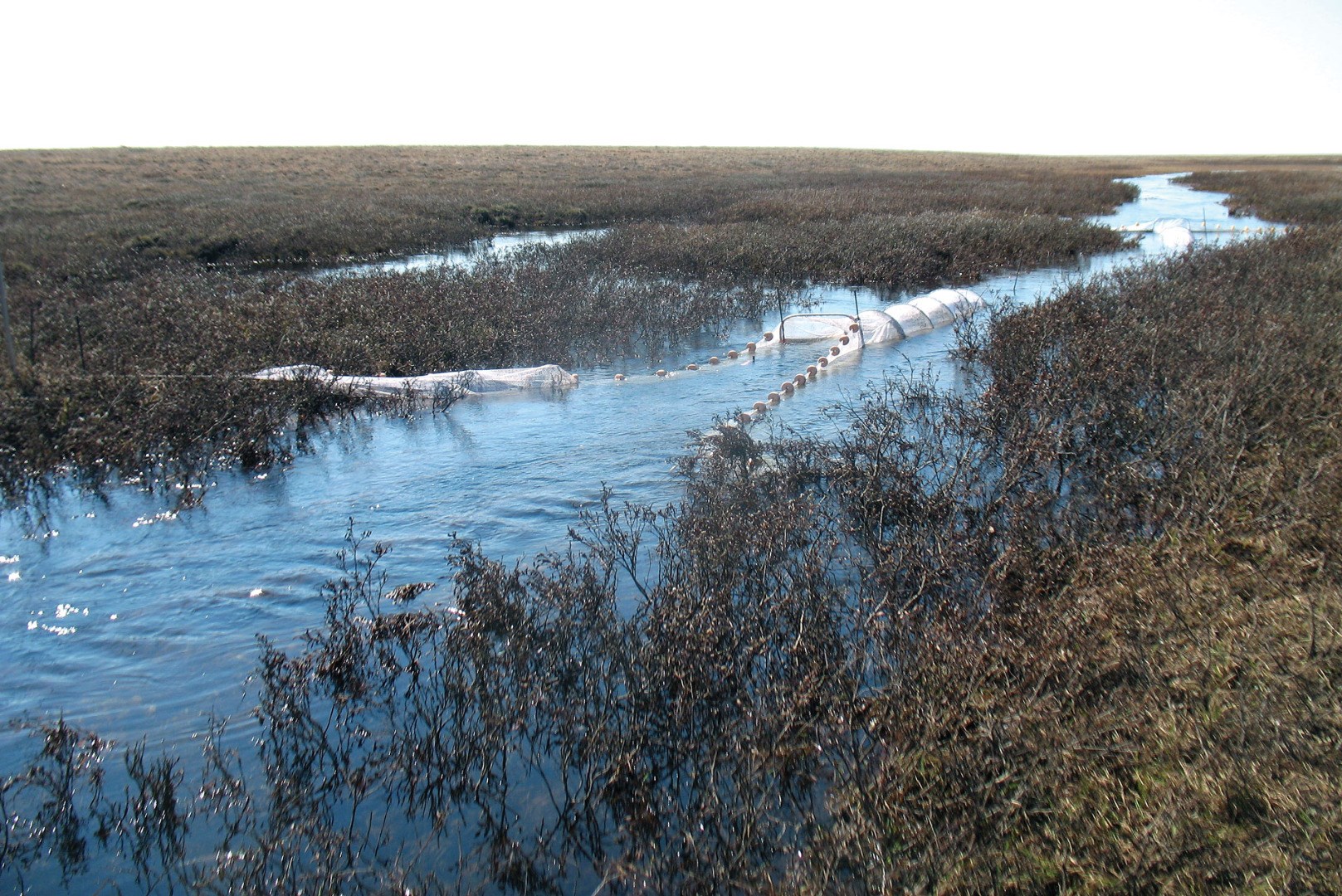
A changing climate is leading to rapid transformations of hydrological processes in low-gradient Arctic terrestrial ecosystems, which are dominated by lakes and ponds, wetlands, polygonised tundra, and connecting stream and river networks. The aim of this proposed study is to gain a deeper understanding of the impacts of climate and land-use change on surface water runoff and connectivity, by forcing the physically-based, spatially-distributed hydrological Water Balance Simulation Model (WaSiM) with a set of different scenarios defined in cooperation with regional stakeholders. All aspects of the water cycle are simulated in WaSiM, as well as permafrost and seasonal soil freeze and thaw. Crea Creek Watershed (30 km2), which is located in the National Petroleum Reserve-Alaska (NPR-A) was chosen as the study area because of its permafrost landforms (bedfast and floating ice lakes, high and low centered polygons), existing observational data (discharge, snow depth, and meteorological variables since 2009), and resource management issues related to permafrost degradation and aquatic habitat dynamics. Foremost of concern is oil development, scheduled to begin in 2017 with the construction of a permanent road and drilling pad directly within the Crea Creek Watershed. Based on regional stakeholder input, two land-use and three climate scenarios were identified for simulation using WaSiM. The land-use scenarios are (1) lake water extraction in the winter and effects on downstream flows in the summer and (2) construction of permanent roads under two alternative routes and the effects of both on surface runoff and connectivity. Climate scenarios consist of the hydrological response (surface water runoff, connectivity and ground temperature) to (1) multi-year droughts, (2) prolonged wetter summer conditions, and (3) warmer, snowier winters. Downscaled meteorological output from the Weather Research & Forecasting (WRF) Model is used to construct the climate scenarios.
Results will provide regional stakeholders with information on the impacts of climate and land-use change on surface water runoff and connectivity that affects aquatic habitat, as well as lake hydrologic interactions with permafrost. These finding will also benefit local communities that rely on these systems for subsistence, and the petroleum industry in the mitigation of environmental impacts to permafrost landscapes within the NPR-A and elsewhere.